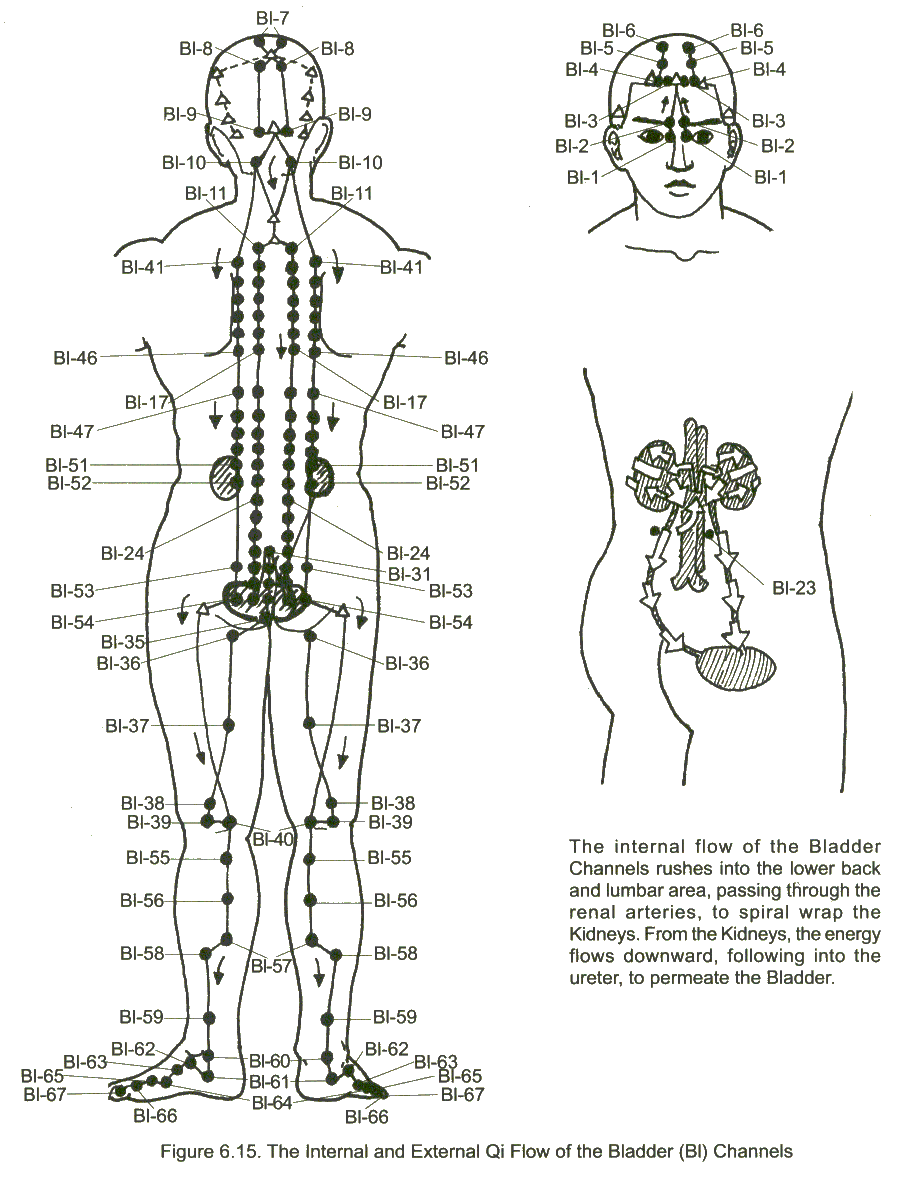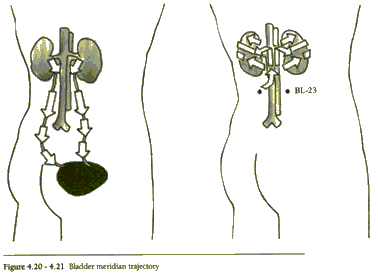
Bladder: Water-energy yang organ

Bladder:
Water-energy yang organ
The bladder is called the 'Minister of the Reservoir' and is responsible for storing and excreting the urinary waste fluids passed down from the kidneys. As an organ the bladder has only this function, but as an energy system the bladder is intimately related to the functions and balance of the autonomous nervous system. That's because the bladder energy meridian runs along the back of the body from head to heal, with two parallel branches flowing along each side of the spinal column. These four branches of the bladder meridian exert a direct influence on the sympathetic and parasympathetic trunks of the autonomous nervous system, whose condition of modern life, over activates the sympathetic system, causing tension and pain along the spine and its periphery. This tension and pain may be relieved by stimulating the flow of energy along the spinal branches of the bladder meridian. Such stimulation induces total relaxation by switching the autonomous nervous system over to the restful, restorative parasympathetic mode. Chinese massage therapy focuses primarily on these four spinal branches of the bladder meridian because of their direct influence over the autonomous nervous system, which regulates all the body's basic vital functions.
| Bladder | |
| Paired Organ | Kidneys |
| Color | deep blue |
| Peak Hours | 3pm-5pm |
| Physical Branches | autonomous nervous system |
| Functions | stores and eliminates urine |
Bladder: Psycho-Emotional Aspects
An imbalance in the Bladder can cause such psychological symptoms as habitual fear, lack of decision making capability and a diminished moral character. If the imbalance becomes chronic, it results in such emotional responses as jealousy, suspicion, and holding on to long-standing grudges.
The Bladder Channel Pathway, Acupuncture Points, and Internal Trajectories
The bladder channel begins at the inner corner of the eye, rising up through the eyebrow (BL-2) over the forehead and skull to join the governing vessel at GV-20. Here it enters the brain, re-emerging as a superficial path at the nape of the neck. This path continues over the base of the skull (occiput), where it divides again into two branches that descend parallel with the spine. The inner branch diverts briefly to meet GV-14 before continuing to the sacrum, then on down the back of the thigh to the center of the knee-fold. An internal branch connects with the kidney and then the bladder, after separating at the lumbar region. The outer branch passes from the occiput along the edge of the shoulder blade and descends to the buttock, continuing down the thigh to meet the other branch at the knee. The single channel continues down the center of the calf muscle and passes behind the outer ankle to the outer tip of the little toe.

Internal Trajectories of the Bladder Meridian
The vessel of the bladder, foot tai yang, starts at BL-1 and passes over the head. The main meridian is the first line on the back, the shu points line. It then:
...comes down the shu line to the lumbar area and goes into the body, spirally wraps the kidneys, then passes down to and permeates the bladder.
This quotation is usually understood to mean that after spirally wrapping the kidneys, the trajectory descends through or with the ureter to the bladder, to permeate the bladder. It is possible that in passing from the lumbar area to spirally wrap the kidneys it passes through the renal artery.

The Associated points, or Back-Shu points, are a set of points located along the bladder meridian running down the sides of the spine. These points are associated with each of the Twelve organs of the body, via the dorsal and ventral nerves coming out from the spine which supply those particular organs.
